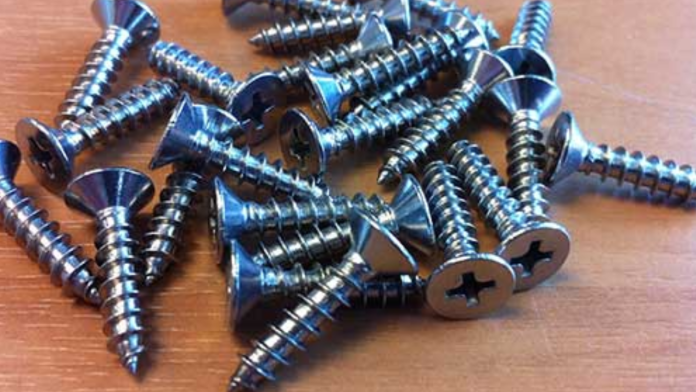Stainless steel M6 bolts contribute to safety and reliability in diverse programs. Their cozy fastening ability helps keep structural integrity, saves you from gadget malfunction, and reduces the hazard of injuries or screw-ups. The designation “M6” indicates a metric thread length with a nominal diameter of 6 millimeters, making these bolts suitable for an extensive range of programs requiring secure fastening.
Their stainless steel development gives super protection from corrosion, making them ideal for use in harsh conditions, along with marine, substance, and outside applications. The importance of stainless steel M6 bolts lies in their unwavering quality and strength. They offer superior energy and toughness as compared to other substances, ensuring long-term overall performance and minimal protection necessities.
Their resistance to corrosion, rust, and chemical harm makes them suitable for applications where exposure to moisture, chemicals, or harsh climate situations is a problem. Overall, stainless steel m6 bolts provide a combination of energy, corrosion resistance, and reliability, making them essential additives in diverse industries in which relaxed and durable fastening is vital.
Strategies for Preventing Loosening of M6 Bolts
Loosening M6 bolts can lead to structural instability, gadget malfunctions, and safety risks in numerous applications. To ensure dependable and cozy fastening, it is critical to put in force effective techniques to prevent bolt loosening. This article explores complete strategies and exceptional practices for preventing the loosening of M6 bolts, protecting factors including bolt design, installation techniques, preload management, and locking mechanisms.
Right Bolt Layout
Proper bolt layout performs an essential function in stopping the loosening of M6 bolts. Elements which include thread pitch and engagement, thread locking capabilities, and shank diameter impact the bolt’s resistance to vibration-brought about loosening. Choosing bolts with self-locking threads or serrated flanges complements resistance to loosening, while at the same time, larger shank diameters increase clamping pressure. Through thinking about these design elements, engineers can make sure M6 bolts offer dependable and cozy fastening in diverse applications.
Installation Methods
Powerful setup techniques are vital for stopping the loosening of M6 bolts. The right torque software and the use of calibrated torque wrenches guarantee correct tightening torque, preload, and clamping pressure. Torque perspective tightening techniques offer accurate preload management, minimizing under-tightening or overtightening. Sequential tightening patterns distribute preload uniformly in more than one-bolt assemblies, lowering stress concentrations. By employing those installation techniques, engineers can preserve the integrity of M6 bolted joints and prevent loosening in various applications.
Preload Management
Preload control is essential for preventing the loosening of M6 bolts. Figuring out the precise preload based totally on application necessities and monitoring preload ranges guarantees joint integrity. Techniques such as ultrasonic measurement or load-indicating washers verify and hold favored preload stages. Compensating for preload loss due to relaxation or settling outcomes by, to begin with, applying better preload guarantees sustained clamping force. Powerful preload control enhances the reliability and performance of M6-bolted joints.
Locking Mechanisms
Making use of locking mechanisms is essential for stopping M6 bolt loosening. Thread-locking adhesives like anaerobic compounds or chemical adhesives prevent self-loosening because of vibration or thermal cycling. Mechanical locking gadgets, including spring washers, cut-up washers, or locking cords, create extra friction to face up to bolt rotation. Nylon insert lock nuts with nylon collars provide resistance to loosening by generating friction between the nut and bolt threads. These mechanisms enhance the reliability of M6 bolted joints.
Surface Treatment
Floor treatment plays an essential role in preventing M6 bolt loosening. Growing surface roughness or applying serrations to mating surfaces enhances friction, lowering relative motion between additives. Surface coatings like zinc plating or phosphate coating provide corrosion protection and decrease friction, stopping surface degradation-prompted loosening. These treatments enhance the reliability and durability of M6 bolted joints, ensuring ease of fastening in various programs.
Joint Design
Effective joint layout is critical for stopping M6 bolt loosening. Designing joints with enough stiffness minimizes relative movement between additives, lowering the transmission of vibrational forces to bolts. The use of pilot holes or clearance holes of suitable length ensures proper alignment and stops binding or move-threading during bolt installation. By considering these elements, engineers can create sturdy joint designs that enhance the reliability and sturdiness of M6 bolted connections.
Final Words
Preventing the loosening of M6 bolts requires a multifaceted approach that addresses bolt layout, installation methods, preload management, locking mechanisms, floor treatment, and joint design considerations. By imposing these techniques efficiently, engineers and preservation experts can ensure comfy and dependable fastening in various applications, minimizing the danger of bolt loosening, structural failure, and safety hazards. Prioritizing the right bolt tightening processes, preload renovation, and using suitable locking mechanisms fosters a way of life of safety and reliability in fastening applications.













